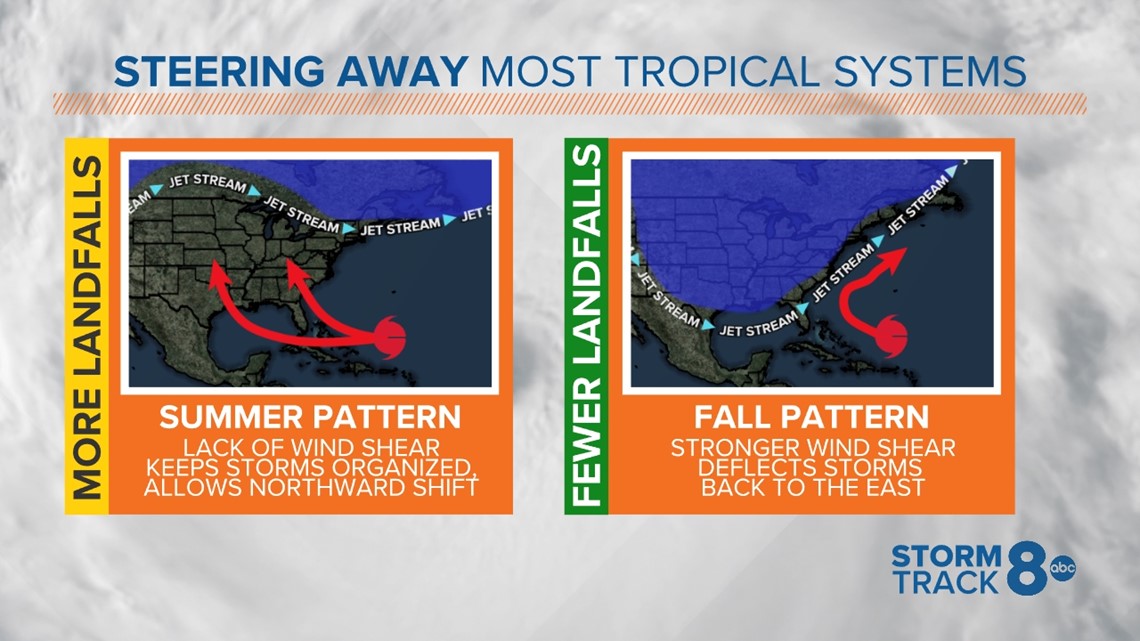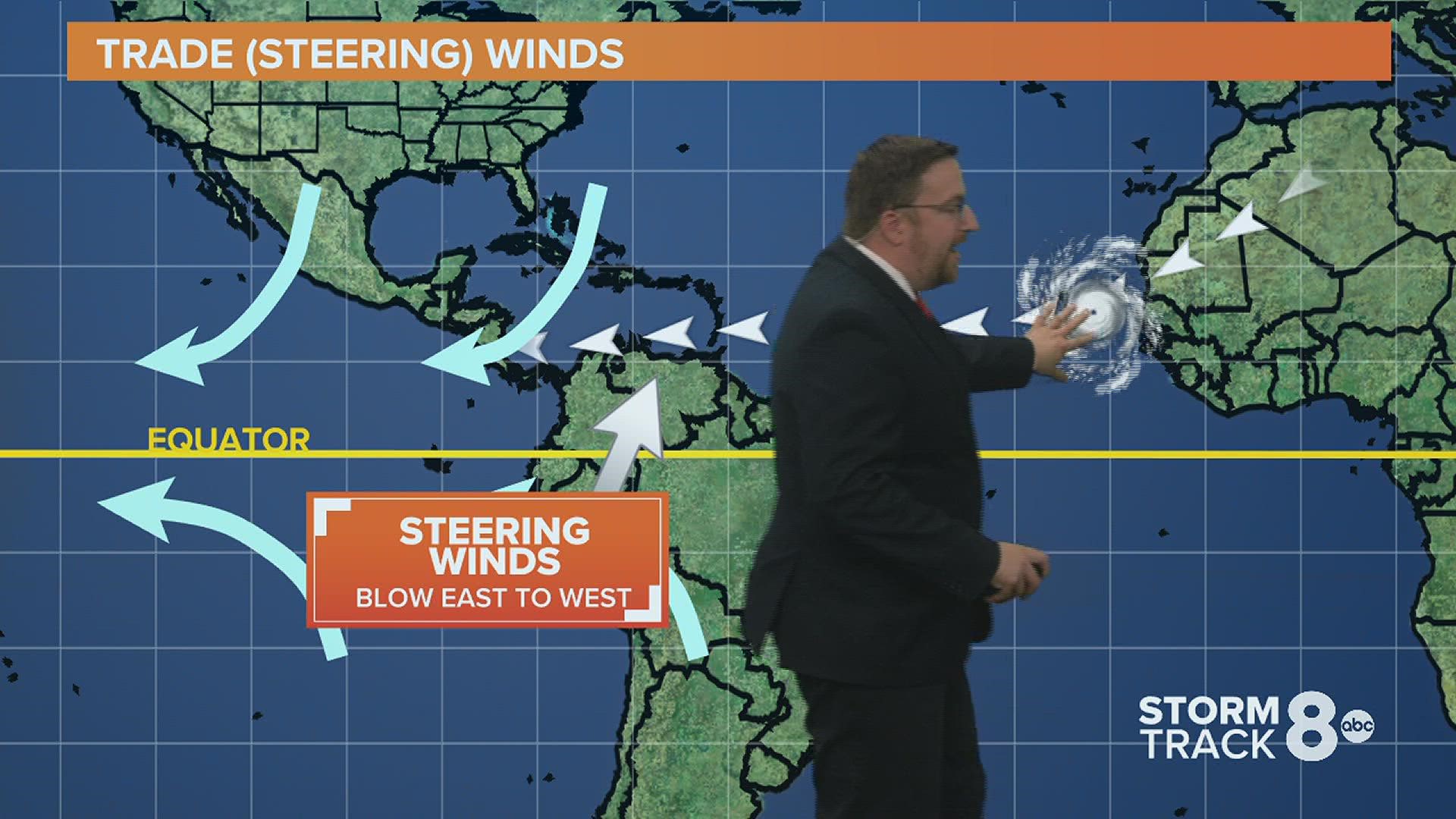MOLINE, Ill. — Here in the Quad Cities, we are used to seeing our weather patterns move from west to east and in some cases, north to south and even southwest to northeast. That isn't the case for tropical systems, especially near the equator in both the Atlantic and Pacific oceans.
As Hurricane Ian approaches Florida, let's break down why the nearly Category 5 storm is moving that way.
Why do hurricanes move from east to west?
The movement of hurricanes has a lot to do with the movement of the global wind pattern, also called the "general circulation." When looking at the entire Earth, we can divide different parts of it into three separate regions.
In the northern part of the globe, we have the polar easterlies, where winds flow from northeast to southwest. Here in the Quad Cities, we live in what's called the "prevailing westerlies," hence why our weather generally moves from west to east.
However, further south as you near the equator, the flow becomes more easterly again as you enter what we call the "tropical easterlies." Tropical systems generally form within this region as powerful complexes of thunderstorms race off the coast of Africa.
These systems then grow and intensify, becoming tropical storms and eventually hurricanes. Because they are often located within the tropical easterly wind zone, these systems will travel from east to west.


As they approach the United States, there are a few more factors that come into play, including the position of jet streams, fronts, and other storm systems in the region. Some storms may continue their westward journey, others get pulled to the north.


The time of year can also impact where hurricanes and other tropical systems eventually end up. In a typical summer pattern, most systems travel into the Gulf of Mexico, leaving the U.S. more vulnerable to a landfalling storm.
Later on in the season, especially in the fall, as the jet stream begins to migrate further south and cooler air moves into the U.S., these systems most often times get deflected away from the U.S. mainland.
Have a question that you would like me to answer for an upcoming Ask Andrew segment? Submit, here!

